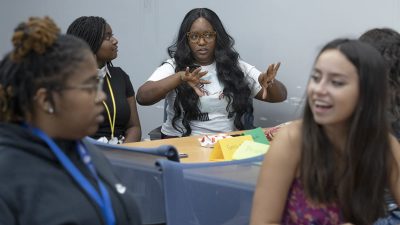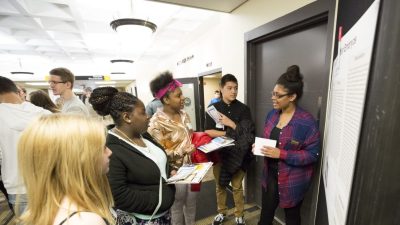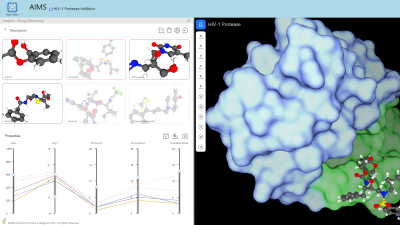Science Tools in the Classroom (STC): Bioinformatics Genomics and More
Project Website(s)
-
Project Description
Elementary and middle school teachers participate in a multi-day summer professional development workshop. During the workshop, teachers refresh and expand their knowledge about life sciences content related to DNA (e.g., DNA itself, relationships between organisms, genetics). They design their own DNA-based classroom activity to run in their classroom during the academic year. Field-tested activities will be disseminated on the project website, for other teachers to use in their classrooms.
-
Abstract
Bioinformatics and genomics are transforming medicine and basic research at a rapid pace challenging K–12 students and teachers to keep up. There have been several calls to introduce these concepts earlier in the curriculum. However it is not just modern science that is failing to reach our students. Our students are not succeeding in basic science particularly students who are traditionally underrepresented in scientific fields. Teachers who do not have comprehensive or up-to-date scientific background contribute to this problem as does a steep decline in student science interest during middle school. The result is a scientific workforce that does not mirror U.S. diversity and a population that does not appreciate the importance relevance or excitement of science.
This project reinforces basic science concepts sparks interest and prepares students for personal academic and professional encounters with bioinformatics and genomics (e.g., tumor profiling personalized medicine and/or science careers). The project provides a partnership model involving teachers scientists and pedagogy experts to develop bioinformatics-enhanced instructional units. Teachers will work collaboratively with scientists and pedagogy experts to design bioinformatics-based units and then implement the units in their classrooms. As the project matures the teachers and project team will tailor the bioinformatics-based units to the local community focusing on cultural and local relevancy.
A mixed methods approach will be used to analyze and evaluate outcomes. Teacher and student learning will be analyzed quantitatively and qualitative methods will be used to assess the impact on teacher and student interest and engagement.
Specific Aims
- Provide teacher professional development through intensive collaborative workshops.
- Field test and evaluate the innovative bioinformatics-enhanced activities in classrooms with a high proportion of URM students.
- Disseminate tools and inform scientific science education and outreach communities about the impact of this approach.
This will contribute to diversifying the STEM pipeline and achieving a scientifically literate populace by producing engaging instructional materials that increase science achievement in a population with high representation of Hispanics.
-
Project Evaluation(s)
Helix Solutions (http://www.helixeval.com) will evaluate of impact of the teacher professional development on the teachers and their students.
-
Resources for Sharing
Shuster, M. Claussen, K. Locke, M. and Glazewski, K. (2016) “Bioinformatics in the K-8 Classroom. Designing Innovative Activities for Teacher Implementation”. International Journal of Designs for Learning (7):1, 60-70.
https://scholarworks.iu.edu/journals/index.php/ijdl/article/view/19406/26870
-
Additional Information
For Science Tools in the Classroom (STC): Bioinformatics, Genomics and More (PI: Michèle Shuster; NMSU)
Project Audience
Elementary and middle school teachers
Subjects Addressed
DNA, genetics, life science, teacher professional development,






